- Our Offer
- Your investment opportunities
- Plan B & Emigrate
- News
- Panama
- Team
- Contact


Corona virus in Panama / update 25 April 2020
The corona virus in Panama has not yet overloaded the health system and the new hospital was opened a few days ago after only 28 days of construction. 300 construction workers have been involved and it has cost 6.5 million USD. The rating agency Moodys predicts that Panama will be the richest country in Latin America after Corona from 2021 (purchasing power per capita / more on this below). The goal of the small country is to become a role model in crisis management within the region and to fulfil its role as the “Hub of the Americas” and to further develop this role.
Here you will find the latest information on the Corona Virus in Panama.
Health (figures as at 23 April)
- There are currently 5,166 cases and 146 deaths.
- Doubling of cases every 19 days (Germany 54 days).
- R0 reproduction rate is at 0.95% (similar to Germany).
- Mortality rate is 2.9% (similar to Germany).
- Panama has performed the third most corona tests per capita in the Americas after Canada and Chile.
- The number of intensive care beds should be increased to 25 per 100,000 inhabitants (approx. 45 in Germany).
- There are car “drive-through” test stations.
- Thermal cameras are installed at the metro stations to detect possible fever in people.
- From Panama, the International Red Cross and the United Nations organize their aid deliveries for the other countries of Latin America.
- The logistical importance of Panama as the “Hub of the Americas“, from which Panama profits in “normal” times, has brought disadvantages in Corona times. At the beginning of the corona crisis, many international businessmen and tourists travelled the country and introduced the virus.
Economy
- First Quantum Mining’s Panama Copper Mine has temporarily suspended 7,000 work contracts as the mine was closed due to several corona falls. The mine was opened last year and is expected to represent 3-5% of Panama’s GDP when fully operational (info link).
- The Panama Canal exceeded its revenue forecasts in the 1st half of the fiscal year (Oct-March). The second half of the year will be significantly worse due to weaker world trade. Panama as a maritime services and logistics country offers its shipping customers payment deferrals and discounts on the use of seaports and other services. With the aim of ensuring that they continue to use Panama as a maritime location even in the current crisis.
- The rating agency Moodys leaves Panama’s rating at investment grade Baa1 with stable outlook despite the corona crisis. According to Moodys, Panama benefits from its sustained economic growth, the global importance of the Panama Canal and the country’s logistical location. According to Moodys, these are also the reasons why Panama will be the richest in Latin America from 2021.
- Nevertheless, the slowdown in world trade will have a major negative impact on economic growth in 2020 and lead to a weakening of debt ratios. Panama’s average real gross domestic product (GDP) growth for the years 2010-2019 was 6.2%. Moody’s estimates that the coronavirus pandemic will shrink the Panamanian economy by 1% in 2020.
- The World Bank currently estimates that the GDP of Latin American countries will contract by 4.6% on average in 2020. The economies of Panama (-2%), Colombia (-2%) and Paraguay (-1.2%) would be least affected. Brazil (-5%), Argentina (-5.2%) and Mexico (-6%) would be hit hardest. In 2021, Panama’s economy is expected to grow again at 4.2%.
- Workers employed in the “informal” sector are particularly hard hit by the crisis in Panama. These are “micro self-employed” who work without contracts and insurance. There are many of them.
- On 26 March, a government bond (36 years maturity / triple oversubscribed) was successfully issued and 2.5 billion USD were collected.
Life
- Tocumen airport should be opened to international passenger air traffic from 23 May.
- The curfew will remain in force until May 6 and the first relaxation is expected in 14 days. Currently, it is assumed that the opening of the economy and the curfew will be different in the provinces (federal states), as the above-mentioned health indicators differ.
- Panama was the first country in the region to introduce curfew controls and even separate them by gender (to reduce the number of people on the streets). Peru, Colombia and other countries have followed suit.
- Those who violate measures are threatened with a 3-month driving license suspension and social work (including cleaning buildings and streets).
- The population is very united behind the measures of the government and the situation is calm and peaceful. However, there have also been food thefts and occasional robberies at kiosks.
Main contents of the speech to the nation by the president on 22.04.:
- President Nito Cortizo and his team of advisors are guided by the best practices of other countries that are successful in containing the virus and opening up their economies. Germany is regarded as one of the role models here because of its robust healthcare system.
- He explained that tax revenues are currently falling due to the crisis (minus 42% in March). Private auditors of international repute will join the government team to analyse the country’s spending in connection with this pandemic.
- So far, about half a million food parcels and shopping vouchers have been distributed to vulnerable families.
- President Cortizo was deeply angered that government officials have accepted these aid packages even though they are fully employed. He is giving these workers 48 hours to voluntarily donate 20% of their salary for the next three months, otherwise he will take action against them.
- He also explained that the banking sector in Panama is extremely important because 27,000 Panamanians are employed there and funds are managed for local and international clients. All strategic decisions of the government that affect this sector must be analyzed very carefully.
- The country’s economic advisors have developed a strategic plan to create jobs through public infrastructure projects. These include the fourth bridge over the Panama Canal, the third metro line and the new children’s hospital.
- The President is optimistic that the country’s economic recovery will be sustainable. He has full confidence in Panama’s Minister of Economy and Finance, Héctor Alexander, a veteran politician who played a key role in restoring the country’s economy in the years following the 1989 US invasion.
FRAPAN-Invest
Klaus Happ’s company “FRAPAN-Invest” advises investors who want to invest in real estate in Panama. Furthermore, Klaus Happ will be happy to advise you personally on the subject of “Plan B in Panama”.
The real estate market in Panama is internationally one of the most interesting for investments. We would like to be your trusted local partner and assist you with the initial purchase. Additionally, we can take care of your real estate in Panama in a sustainable way.
Profitable, safe and beautiful:
Investments in Panama

